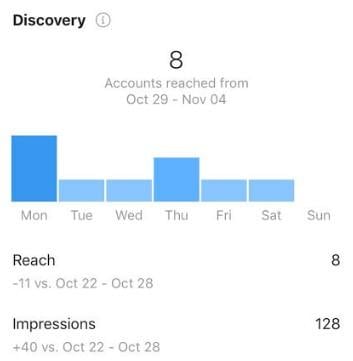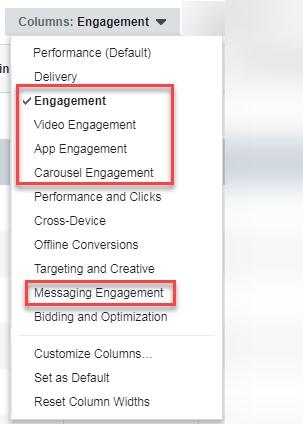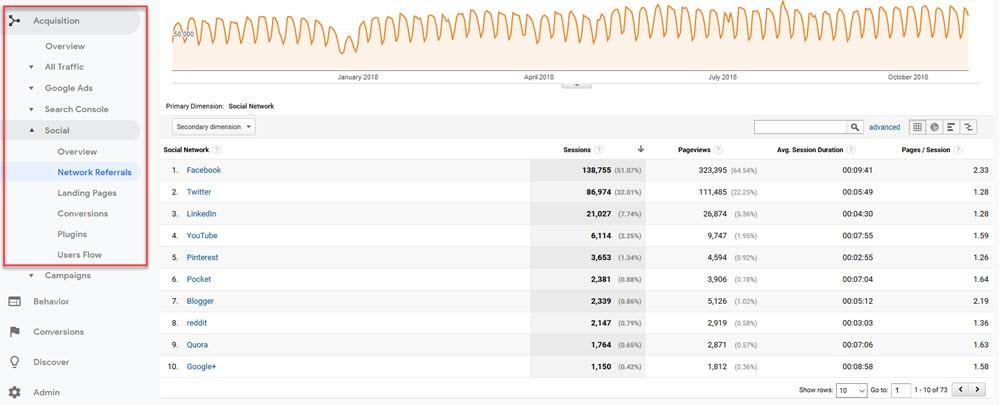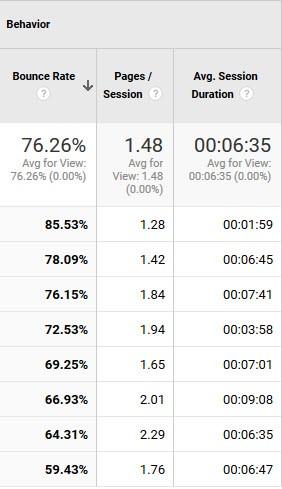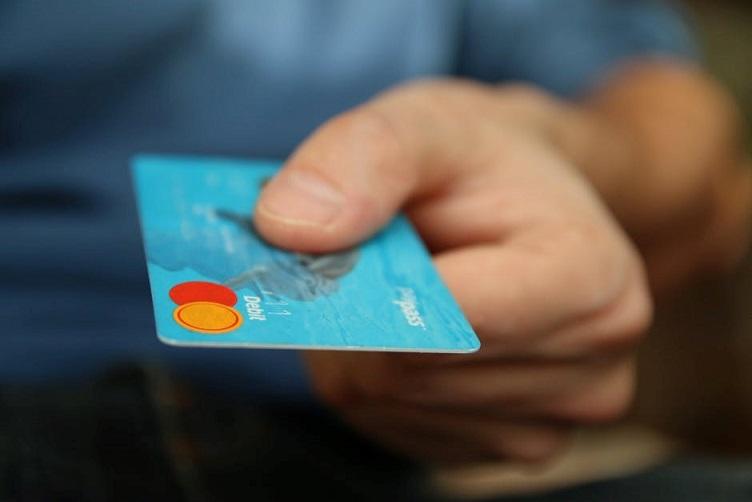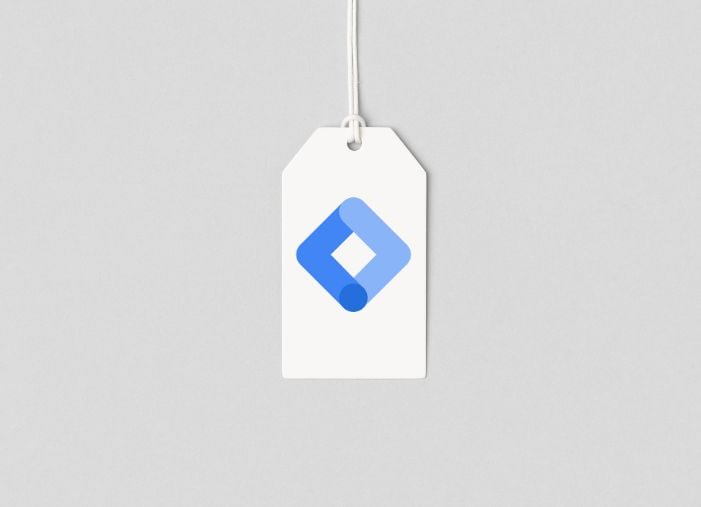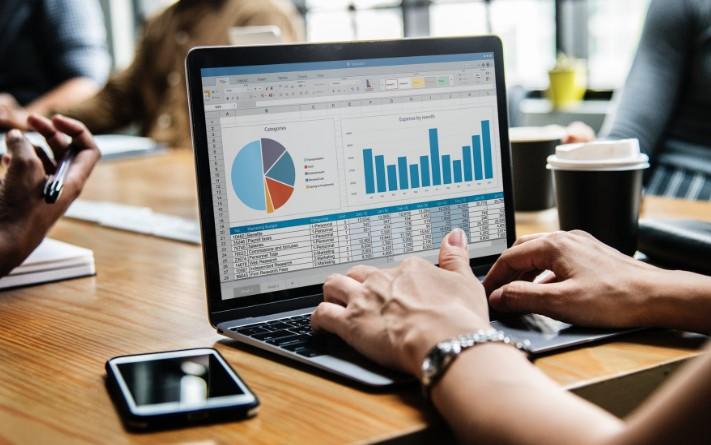
Let’s face it: If you’re running paid campaigns on social media, your boss is always going to be asking you about your social media metrics. “Are they improving?” “What are we tracking?” “What should we be tracking?” “Why?”
If all of these questions are making your head spin, you are not alone! With so many metrics out there, it can hard to decipher which ones are most critical to monitor.
For online advertisers, tracking your social media performance isn’t just important to your boss, it should be important to you too. Having a handle on the metrics that matter is not only going to make you look smart at work, it’s going to help you improve your social media advertising strategy so you can grow your fan base and potentially even your business through the power of social media marketing.
With the majority of consumers spending several hours a day on platforms like Instagram, Facebook, and Twitter, it is key to have an effective strategy that is continuously evolving as the platforms release new features, tools, and improvements. The beast of social media is ever-changing, so your strategy needs to be as well. Tracking critical metrics effectively is the first step to taking over the social world, impressing your boss, and earning that raise you’ve been eyeing.
If you’re running paid campaigns on social media, here are the top eight social media metrics that you need to be tracking, as well as tips on how to track them and why you should be. Without further ado, let’s dive in!
#1: Social Media Reach
What Is Reach in Social Media?
Reach is a measure to how many people your brand and content are getting in front of. You can think of reach simply as the number of eyes your social media presence is exposed to. Of course, the more eyes the better, and while reach does not always paint the full picture, it is a critical metric to monitor.
Why Reach Matters
Reach is a top-of-funnel metric, but still a metric that every social media marketer should be closely monitoring and continuously working to improve. Strong reach is an indication of strong brand awareness, and without your brand, what are you, really? If you are able to build a recognizable, well-respected, and influential brand, the other goals you’ve set forth (like leads, subscribers, and conversions) are going to happen with more ease.
The bottom line is that if your reach is not growing, this is a problem! You spend a lot of time working on social, so ensuring you are reaching a substantial audience is key.
How to Measure Reach
You can track your reach in all your individual social media platforms. To track this metric, look at your follower growth, individual post reach, overall campaign reach, and your audience growth rate in your various social media platforms. Your campaigns should improve your reach over time.
Here’s an example of how you can track reach on Instagram through the Insights page of your profile. If this was my Instagram business account I’d be quite concerned, because as you can see my reach is down by -11 from the week before!
#2: Engagement
What Is Engagement?
Engagement is the social media metric that informs you how many people are interacting with the content you put out on social platforms. Engagement can come in several forms, such as comments, shares, likes, clicks, and saves.
Why Engagement Matters
If your reach is spot on, but your engagement is missing, this is a problem. If people are not engaging with the content you shared, then what is the point of posting it in the first place? Your social media engagement rate tells you how interested your audience is, plus what content resonates and what content does not. Then you’ll be able to tweak your social media copy and overall strategy based on this information. For instance, if pictures of dogs are receiving 10X more engagement then pictures of cats, you would up the dog pictures and put the cats to bed.
How to Measure Your Engagement Rate
So how do you know if your content is engaging enough? Each social media platform where you’re running ads should show you the engagement rate of each individual ad. Run and test multiple ads so that you can determine a typical engagement rate for your account. Whenever an ad gets below average engagement, change it or throw it out. When an ad gets above average engagement, keep it running and figure out how you can create that magic again.
Facebook, for example, lets you check on the engagement for each type of ad. Here are the options:
If you want to take engagement tracking a step further, read on to metric #4…
#3: Amplification Rate
The more I’ve become familiar with amplification rate, the more I’ve realized how critical this metric should be for social media marketers to track.
What is Amplification Rate?
This metric was first defined by author and digital marketing evangelist at Google Avinash Kaushik as “the rate at which your followers take your content and share it through their networks.” Basically, you can think of amplification rate as the ratio of shares per social post.
Why Amplification Rate Matters
While likes and comments are great to see, they don’t necessarily expand your reach. But when your followers amplify your content, it gets exposed to new audiences without you even having to pay for the additional exposure. A high amplification rate is a real indication that your followers have made the active choice to be tied to your brand among their own peers. They’re sharing your content for you, like brand ambassadors.
How to Measure Amplification Rate
To measure your amplification rate, keep an eye on the number of times posts are shared or re-posted, divide that number by your total followers, and multiply by 100. (Unfortunately, this is one of the few worthwhile social media metrics that aren’t typically provided in the native platforms.)
#4: Social Media Referrals
What Are Social Media Referrals?
Referrals, or referral traffic, are a measure of how many visitors are coming to your site from social media. When someone clicks a link in a social media post and then lands on your site, that’s a referral visit. For many businesses, social media referrals are a significant source of website traffic.
Why Social Referral Visits Matters
It’s great when people engage with your social posts, but even better if they come to your website, where you have complete control of their experience with your brand. If people are taking the time to actually leave their social profiles to explore your website, this really says something about how interested they are in your content and offerings.
There are many ways to encourage followers to visit your website on social media. Whether it be through your Instagram story or a video advertisement with a website CTA at the end, it is critical to track who is taking advantage of these opportunities to leave social and come to your website. This will ensure you are able to understand what content is resonating the most with followers so you can leverage that knowledge to improve your social strategy.
How to Measure Social Referrals
You can track this metric through Google Analytics. Go to Acquisition > Social to see which networks are driving traffic to your site and how much.
Ideally, you should be using UTM parameters on your social links so you can separate out organic referrals from paid referrals and clearly see which campaigns are driving the most traffic to your website.
#5: Click-Through-Rate
What is Click-Through-Rate (CTR)?
Click-through-rate or CTR tracks how many people click your ad or content, typically to be directed to a page on your site where additional content lives. If you’re running ads on social media, your links should point to landing pages where users will hopefully go on to complete a conversion.
Why CTR Matters
Clearly if people are clicking, they are interested (unless their finger slipped that is!). Tracking this metric is critical because if your CTR’s are very low then it’s clear the content is not resonating with your audience. But that’s not the only reason it’s important. As in Google Ads, your CTR has an effect on your ad costs. Social platforms tend to favor ads with high click-through rates, so they get more impressions and better placements, and are rewarded with lower costs per click.
How to Measure CTR
CTR is defined as the number of clicks divided by the number of impressions, multiplied by 100. Lucky for you, all the major social platforms automatically calculate CTR for each of your ads, so you don’t have to calculate this manually. To see the CTR of a Facebook ad, you can check the “Ads” tab and select the “Performance and Clicks” column view:
#6: Bounce Rate
Ah! One of the few metrics we want to be low.
What Is Bounce Rate?
Bounce rate measures the number of people who landed on your website or landing page and then immediately split. This could be due to a variety of reasons, such as accidental clicks, but if the traffic coming to your site from social media has an unusually high bounce rate, it’s a sign that your site isn’t giving users what they hoped to find.
Why Bounce Rate Matters
A low bounce rate indicates that your site is providing value to your users, because once they reach it, they want to stick around a while, and hopefully even convert. In contrast, a high bounce rate is typically an indication that something is awry.
The nice thing about measuring bounce rate is that you can compare the bounce rate of your social traffic to that of other traffic sources, like search for instance. If your bounce rate is much lower through Facebook compared to Bing, then you know your social strategy on that channel is quite effective.
How to Measure Bounce Rate
To measure bounce rate, you can use tools like Google Analytics. Within Google Analytics, go to the Acquisition tab > All Traffic, then segment by Channels. You’ll then find a column labeled “Bounce Rate.” Click on the heading to sort your channels from lowest to highest bounce rate.
#7: Conversions and Conversion Rate
This one likely seems like a no brainer, but is it something you’re effectively tracking with your social media efforts right now? Also, how are you defining social conversions?
What Are Conversions in Social Media?
Conversions are quite specific to your individual business model, so this is something that you will need to define relative to your social media strategy and industry. To you, a conversion might be a direct website purchase, for other businesses, it might count as a conversion if someone subscribes to your newsletter, downloads gated content, or registers for your local event. Conversions are the business goals you’re ultimately trying to achieve, the goals that raise your bottom line.
However, your specific conversions are defined, conversion rate is a measure of how many people who click your ad go on to complete the conversion process.
Why Conversion Rate Matters
In social media advertising, conversion rate is important because of its direct effect on your ROI (return on investment). You need a strong conversion rate, as well as a low cost per conversion, in order to make your ad investment worth it.
How to Measure Conversions
After you’ve defined what a conversion is for you, to properly track conversions you should work with your website team to ensure you have conversion tracking properly configured through your website. Check out the below resources for tips on tracking conversions and conversion rate through specific social media platforms:
- Using the Facebook Pixel to Track Conversions on Facebook (also applies to Instagram, since Instagram ads are run as a placement through Facebook)
- How to set up conversion tracking for Twitter ads
Even if you’re not running paid social media campaigns, when posting through social it’s a good idea to have a method of tracking a user’s path through a shortened URL or call-to-action link that is collecting the data. This will allow you to track which organic social posts are leading to conversions down the line.
#8: Cost per Conversion
What Is Cost Per Conversion?
Your cost per conversion, or cost per action, is the what it costs to secure a conversion once you figure in the costs of individual ad clicks, not all of which will lead to the conversions you want. For example, if you’re paying $0.10 for each ad click, but it takes 100 ad clicks before you get a single conversion, your cost per conversion will be $10.
Why Cost per Conversion Matters
Does it even need to be said? Your cost per conversion figures very directly into your ROI, whatever the marketing channel. If the product you’re trying to sell, say, through Instagram costs $50 on your website, and your cost per conversion on Instagram is $75, then you’re paying more to earn the sale than you get from the sale. That’s negative ROI. So it’s key to achieve a low cost per conversion so you can make money (instead of losing money) from your social ads.
How to Measure Cost per Conversion
As with most of the above advertising metrics, the platforms where you manage your ad campaigns should calculate your cost per conversion for you. Keep a very close eye on this metric so you know you’re getting ROI from your social media campaigns.
Social Media Metrics, Sorted
While it can be easy to get bogged down in all the data, just ensure you are tracking these top critical social media metrics effectively and you’ll be just fine. And remember, you are not just tracking metrics to impress your boss – rather use the data to make real changes that impact your business.


